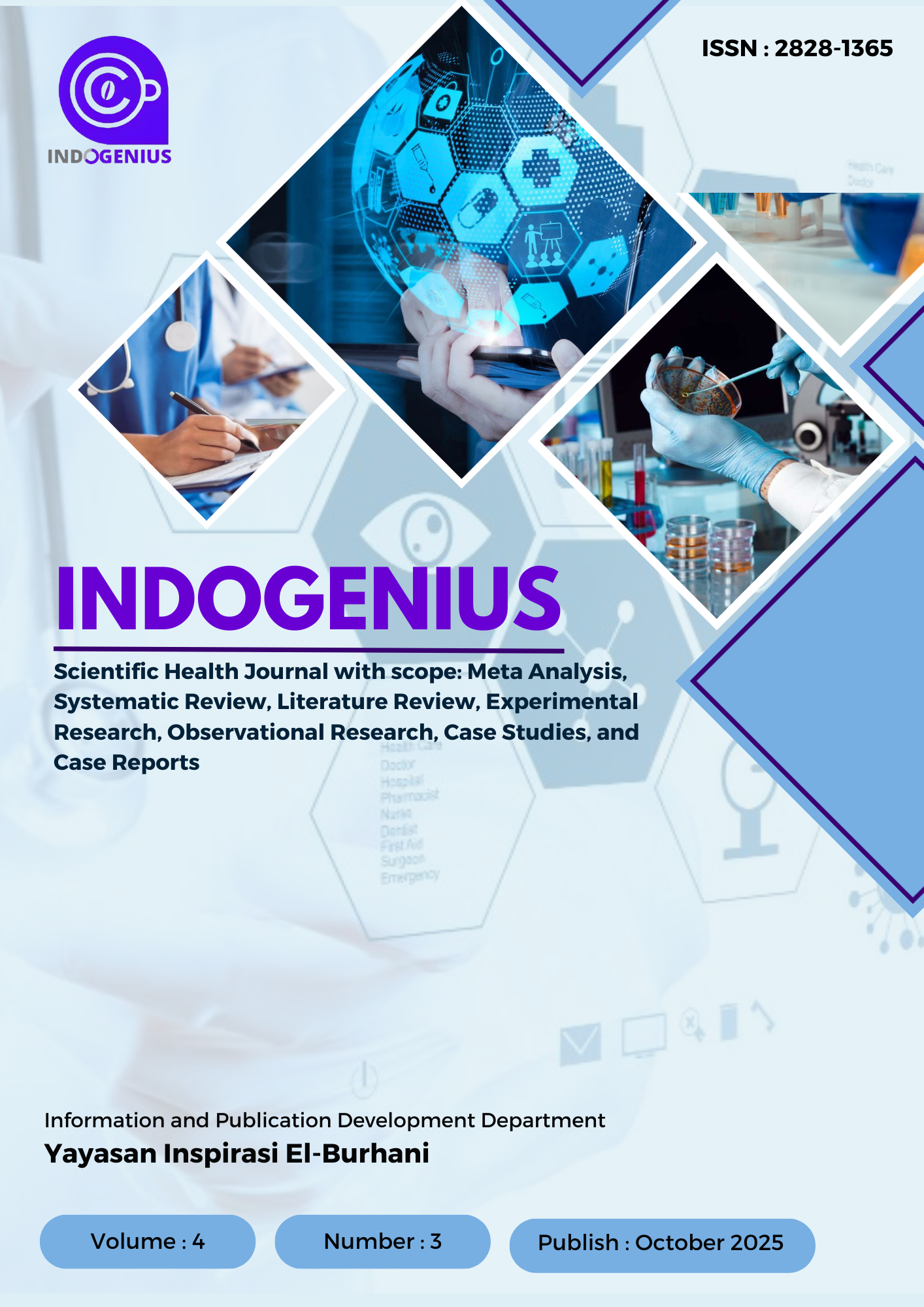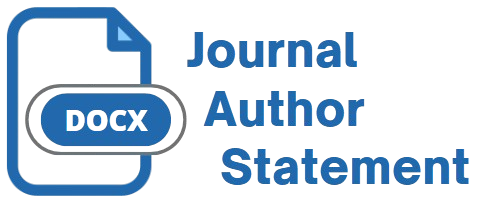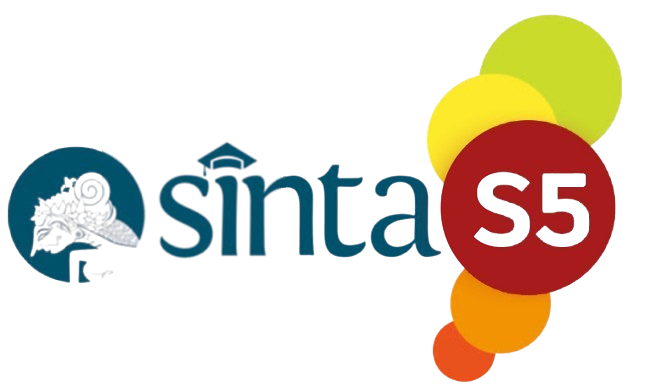The Effectiveness of Progressive Muscle Relaxation on Reducing Depression Levels in the Elderly in Workplaces Muslim Elderly Home
DOI:
https://doi.org/10.56359/igj.v4i3.782Keywords:
Progressive Muscle Relaxation, Depression Levels in The ElderlyAbstract
Background & Objective: Depression can arise due to increased stress factors and reduced adaptability in older adults. Its effects include decreased appetite, weight loss, digestive problems, and sleep disorders. On the other hand, the psychological effects that can be caused by depression include the risk of suicide. Progressive muscle relaxation therapy is carried out in stages. This helps reduce muscle tension caused by depression, so that the body becomes relaxed and the mind calm. ROP therapy activates the parasympathetic nervous system and regulates the hypothalamus to reduce stress signals, thereby reducing stress levels in the elderly, especially those experiencing depression. The purpose of this study was to analyze the effectiveness of progressive muscle relaxation in reducing depression levels in elderly people in the Muslim Nursing Home Work Area.
Method: The research design was quasi-experimental, using a pre-post test single group design with a sample size of 15 respondents and purposive sampling according to the inclusion criteria. Depression levels were measured using the Geriatric Depression Scale (GDS) instrument. The data were analyzed using the Wilcoxon test.
Result: The results showed that progressive muscle relaxation therapy was effective in reducing depression levels in the elderly with a p-value (0.002) < p-value (0.05). This means that progressive muscle relaxation therapy is effective in reducing depression levels in the elderly in the Muslim Nursing Home Work Area.
Conclusion: Based on the results of the study, progressive muscle relaxation therapy is more effective in helping to reduce depression levels in the elderly. Progressive muscle relaxation therapy is beneficial for reducing depression in the elderly and is recommended as a non-pharmacological nursing therapy.
Downloads
References
Abdul Aziz Azari, MIZ (2021). Factors Associated with Depression in the Elderly. Medical Journal of Al Qodiri, 6(2), 66 72.https://doi.org/10.52264/jurnal_stikesalqodiri.v6i2.94
Abdul Muhith, SS (2016). Gerontic Nursing Education. Indonesia (Putri Chri). Andi Publisher.
Andriani, L., & Sugiharto, S. (2022). Overview of happiness levels in community-dwelling elderly. BSI Nursing Journal, 10(2), 291–297.
Arjuna, A., & Rekawati, E. (2020). Complementary Therapy for the Management of Anxiety or Depression in Community-Dwelling Elderly. Silampari Nursing Journal, 4(1), 205–214.https://doi.org/10.31539/jks.v4i1.1430
Ati, NAL, Zahro, SF, Pusparini, Y., Widowati, SA, & Rofia'ah, SN (2022). The Effect of Progressive Muscle Relaxation Group Activity Therapy (TAK) on Pain and Mental Health in the Elderly. Indonesian Community Health Journal, 2(1), 103–111.https://ebsina.or.id/journals/index.php/jkki
Azhrah Fatimah Ayunurrochim, Nopryan Ekadinata, & Muh Fathoni Rohman. (2024). Effectiveness of Progressive Muscle Relaxation (ROP) Intervention on Reducing Depression Levels in the Elderly: A Nursing Case Report. Corona: Journal of General Health Sciences, Psychology, Nursing and Midwifery, 2(2), 152–161. https://doi.org/10.61132/corona.v2i2.410
Azizah, CO, Hasanah, U., & Pakarti, AT (2021). Application of Progressive Muscle Relaxation Techniques to Lower Blood Pressure in Hypertensive Patients. Jurnal Cendikia Muda, 1(4), 502–511
Damayanti, R., Irawan, E., Tania, M., Rahmawati, R., & Khasanah, U. (2020). The Relationship Between Activity of Daily Living (ADL) and Depression Levels inElderly. BSI Nursing Journal, 8(2), 247–255.http://ejurnal.ars.ac.id/index.php/keperawatan/article/view/422
Ghodela, A., Singh, V., Kaushik, N., & Maheshwari, S. (2019). Effectiveness of progressive muscle relaxation therapy on anxiety and depression: A pre-experimental study on elderly people of old age homes. Indian Journal of Psychiatric Nursing, 16(2), 56.https://doi.org/10.4103/iopn.iopn_20_19
Gökşin, İ., & Aşiret, G. D. (2021). The effect of progressive muscle relaxation on the adaptation of elderly women to depression and old age: a randomized clinical trial. Psychogeriatrics, 21(3), 333–341.https://doi.org/10.1111/psyg.12673
Gusty, RP, Kp, S., & Erwanto, NRP (2023). Progressive Muscle Relaxation Reduces Stress and Blood Sugar in Diabetes Mellitus Patients (N. Duniawati(ed); 1st ed).
Hadrianti, D., Saherna, J., Arji, A., Pratama, Z., Putri, A., & Khaliza, N. (2024). Geriatric Depression Scale (GDS) as an Assessment of Psychological Status in the Elderly. Journal of Community Service Creativity (PKM), 7(3), 1236–1246.
Rachmawati, F., Z, D., Muttaqin, Z., & Muryati, M. (2023). Analysis of Factors Causing Depression in the Elderly: Medical History, Social Interaction, and Family Support. Journal of Nursing Indonesia Florence Nightingale, 3(2), 8–16.https://doi.org/10.34011/jkifn.v3i2.1782
Rian Tasalim, S.Kep., Ns., MK (2024). Depression: Understanding, Treatment, and Prevention (AFL Difiyani Puspitari (ed); Ummu Tasyi). PT. Adab Indonesia.
Rosalina, L., Oktarina, R., Rahmiati, & Saputra, I. (2023). Statistics Textbook. FEBS Letters, 185(1), 4–8.
Safira, DA, Oktaviyantini, T., & Hastuti, H. (2024). Differences in Depression Levels in Elderly People Who Do Elderly Exercise and Those Who Do Not Do Elderly Exercise. Plexus Medical Journal, 3(2), 84–92.https://doi.org/10.20961/plexus.v3i2.1260
Sayidah, N. (2018). Research Methodology Accompanied by Examples of Its Application in Research (1st ed). Zifatama Jawara.
Downloads
Published
How to Cite
Issue
Section
License
Copyright (c) 2025 Saka Adhijaya Pendit, Dayuningsih, Anissa Dwi febriana

This work is licensed under a Creative Commons Attribution 4.0 International License.

















